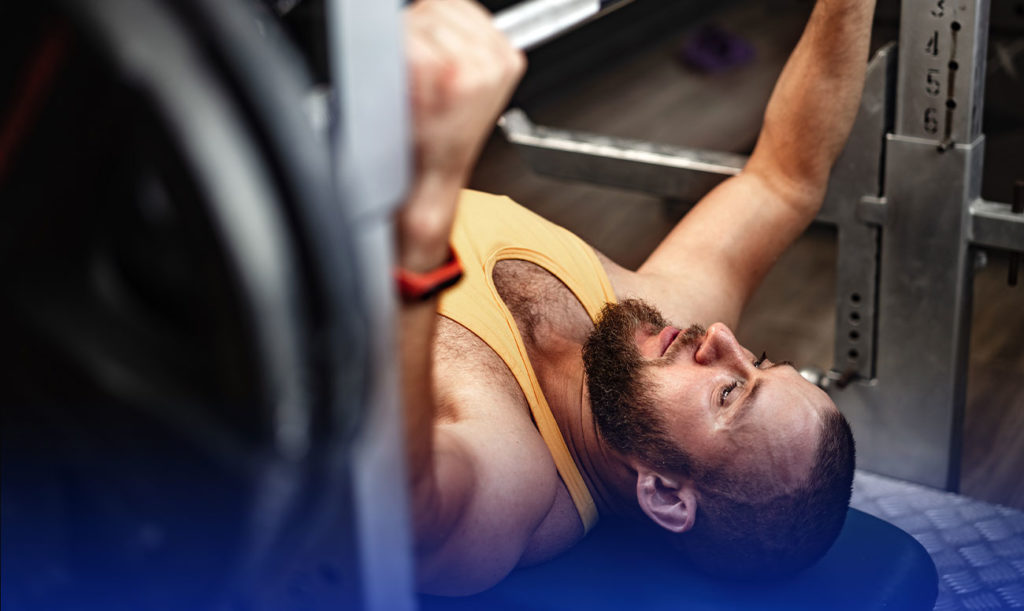
Bench press: the most common mistakes
The bench press is the most popular exercise among athletes looking to build muscle and strength. But even though it is the most well-known, mistakes are still being made that can be detrimental to the health of every athlete.
Despite the relatively simple nature of the lift, many mistakes are possible, from technical imperfections to suboptimal program designs to general misinformation regarding the lift and its execution.
Main errors in bench press
Lack of progressive overload in a training program
A person who always lifts the same amount of weight or never changes his program should not be surprised when he fails to get stronger.
If you always put 100 kg on the bar and only do reps with this load, you can never expect to be able to bench press with much more than 100 kg.
This advice applies to any workout in general.
Detach the glutes from the bench when attempting to press outward from the bar
This is a natural reaction of the body to assume a more favorable biomechanical position. Principalmente cuando la resistencia comienza a ser demasiada como para manejarla de forma estricta.
It is also an instinct that should be fought all the time to preserve lower back health. Específicamente, los discos intervertebrales pueden experimentar una compresión excesiva al ser forzados en esta posición.
If you have this habit, take the starting level in weight and try to maintain proper posture to prevent injury. Increase it progressively and you will gradually return to carrying the weight of before.

The spotter gets a better workout than the bench press performer
This occurs with any exercise that requires a spotter to provide assistance if the lifter can no longer perform the movement alone. El propósito del observador es dar una cantidad relativamente pequeña de ayuda en la última o dos últimas repeticiones. Lo anterior para que el levantador pueda pasar el punto de falla.
If there are 135 kg on the bar and the observer has to provide 22.5 kg of assistance to lift the bar, then it is necessary to reduce the weight considerably.
Bouncing the bar against the chest
To say that a person is using momentum when pushing the bar up is probably not quite correct. The most likely reason for the appearance of a “bounce” in the chest is the extension reflex of the muscles and connective tissues.
Place the feet up on the bench
In this position, you do not keep your chest isolated, compared to leaving your feet on the floor. However, there may be benefits for some people who bench press this way:
- Placing the feet on the bench will certainly engage the upper body stabilizer muscles to a much greater degree. Performing the bench press in this manner largely eliminates the hip, leg and foot stabilizers..
- For some people with low back problems or injuries, placing the feet up on the bench can alleviate the pain felt in the natural arch of the lower back.

Summary
However, don’t expect to achieve a bench press at its true maximum level (by reps or weight) by having your feet on the bench.
The bench press is extremely popular as a gym exercise and as a competitive lift (as one of the 3 weightlifting disciplines). However, you must take execution seriously in terms of technique in order to maximize safety. You must follow certain training principles if you want to gain strength.
While many argue that the bench press exercise gets more attention than it deserves, no one can question its popularity among all groups, from recreational lifters to elite athletes.
Despite the relatively simple nature of the lift, many mistakes are possible. From technical imperfections to suboptimal program designs to general misinformation regarding the lift and its execution.






